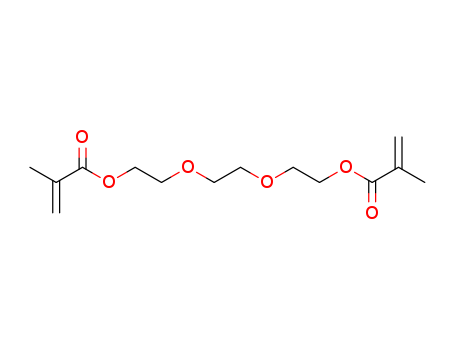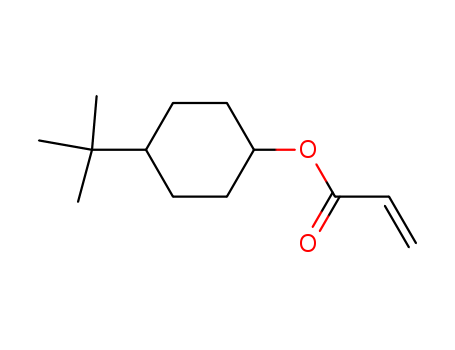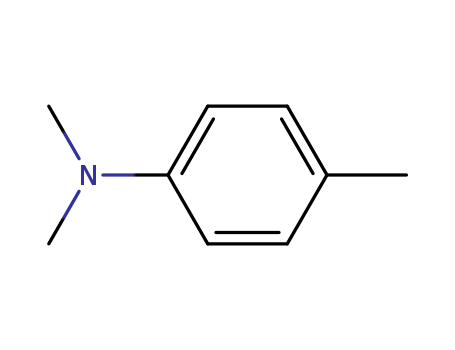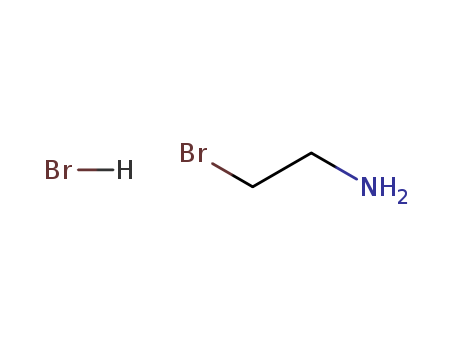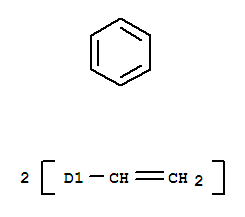
1321-74-0
- Product Name:Divinylbenzene
- Molecular Formula:C10H10
- Purity:99%
- Molecular Weight:131.19
Product Details
Top quality factory supply 1321-74-0 Divinylbenzene at low price
- Molecular Formula:C10H10
- Molecular Weight:131.19
- Appearance/Colour:colourless liquid
- Vapor Pressure:0.9 mm Hg ( 30 °C)
- Melting Point:-66.9oC
- Refractive Index:n20/D 1.561(lit.)
- Boiling Point:195°C(lit.)
- Flash Point:148°F
- PSA:0.00000
- Density:0.919g/mLat 20°C
- LogP:2.97260
Divinylbenzene(Cas 1321-74-0) Usage
|
Reference |
F. C. Huang, C. H. Ke, C. Y. Kao, W. C. Lee, Preparation and application of partially porous poly(styrene‐divinylbenzene) particles for lipase immobilization, Journal of Applied Polymer Science, 2001, vol. 80, pp. 39-46 Teresa Norber-King, Toxicity Reduction and Toxicity Identification Evaluation for effluents, ambient waters, and other aqueous media, 2001, ISBN 1-880611-64-3 |
|
Air & Water Reactions |
Flammable. Insoluble in water. |
|
Reactivity Profile |
Divinylbenzene may react vigorously with strong oxidizing agents. Can react exothermically with reducing agents (such as alkali metals and hydrides) to release gaseous hydrogen. May react exothermically with both acids and bases. May in the presence of various catalysts (such as acids) or initiators undergo exothermic polymerization. Inhibited by presence of an additive. When uninhibited violent polymerization may occur . Substitution at the benzene nucleus occurs by halogenation (acid catalyst), nitration, sulfonation, and the Friedel-Crafts reaction. |
|
Health Hazard |
Divinyl benzene is an irritant of eyes, nose, and mucous membranes. Mild respiratory irritation occurred in workers exposed to 0.4–4ppm divinyl benzene. Mild irritation was also reported from skin and eye contact. |
|
Fire Hazard |
Divinylbenzene is combustible. |
|
Flammability and Explosibility |
Notclassified |
|
Safety Profile |
Mildly toxic by ingestion. An eye irritant. Combustible. When heated to decomposition it emits acrid smoke and irritating fumes. |
|
Carcinogenicity |
Divinyl benzene was weakly genotoxic in vivo, inducing a dose-dependent increase in sister chromatid exchanges and an increase in the frequency of chromosome aberrations in male mice exposed at concentrations of up to 75ppm for 3 days. The 2003 ACGIH threshold limit valuetime- weighted average (TLV-TWA) for divinyl benzene is 10ppm (53mg/m3). |
|
Purification Methods |
Purify divinylbenzene by dissolving in Et2O, shaking with H2O, drying over CaCl2, filtering, evaporating and distilling in vacuo. It polymerises within 2-3days unless 4-tertbutylcatechol (0.05%) is added as stabilizer. [Fries & Bestian Chem Ber 69 715 1936, Beilstein 5 III 1366.] |
|
Uses and Mechanism of Action |
Divinylbenzene is widely used as a crosslinking agent in the production of polymers, ceramics, and composites. It is also employed in fields such as materials science, electronics, and membrane technology. In polymer chemistry, divinylbenzene acts as a crosslinking agent, forming covalent bonds between polymer chains and increasing the structural integrity and stability of the resulting materials. In ceramics, it can act as a carbon source, contributing to the formation of carbon-rich phases and enhancing electrical conductivity. |
|
History and Development |
Divinylbenzene has been used in polymer chemistry since the mid-20th century as a crosslinking agent. Its versatile applications and role in improving material properties have led to continued research and development in various fields. |
|
Production Methods |
Divinylbenzene can be synthesized from the reaction of ethylene with benzene in the presence of a catalyst, typically aluminum chloride or aluminum bromide. |
|
Physical properties |
Divinylbenzene is a water-white to straw colored liquid. Slightly less dense than water and insoluble in water. Vapors may be toxic. Used in making rubber.Synthetic rubber is any one of a group of man-made elastomers that approximate one or more of the properties of natural rubber(polyisoprene). Divinylbenzene has been used in Styrene-Butadiene copolymers (SBR) as adhesives and as processing aids in the extrusion of general purpose rubbers. Rubbers used as impact modifiers such as Methacrylate-Butadiene-Styrene (MBS) have been improved with the inclusion of Divinylbenzene. |
|
General Description |
Divinylbenzene (DVB) consists of a combination of meta and para isomers of DVB and ethylvinylbenzene. It can be used as a monomer for the preparation of linear polydivinylbenzene by anionic polymerization. |
InChI:InChI=1/2C10H10/c1-3-9-5-7-10(4-2)8-6-9;1-3-9-6-5-7-10(4-2)8-9/h2*3-8H,1-2H2
Relevant Products
-
Ethoxylated trimethylolpropane triacrylate
CAS:28961-43-5
-
2-Bromoethylamine hydrobromide
CAS:2576-47-8
-
Ethoxylated trimethylolpropane triacrylate
CAS:28961-43-5


